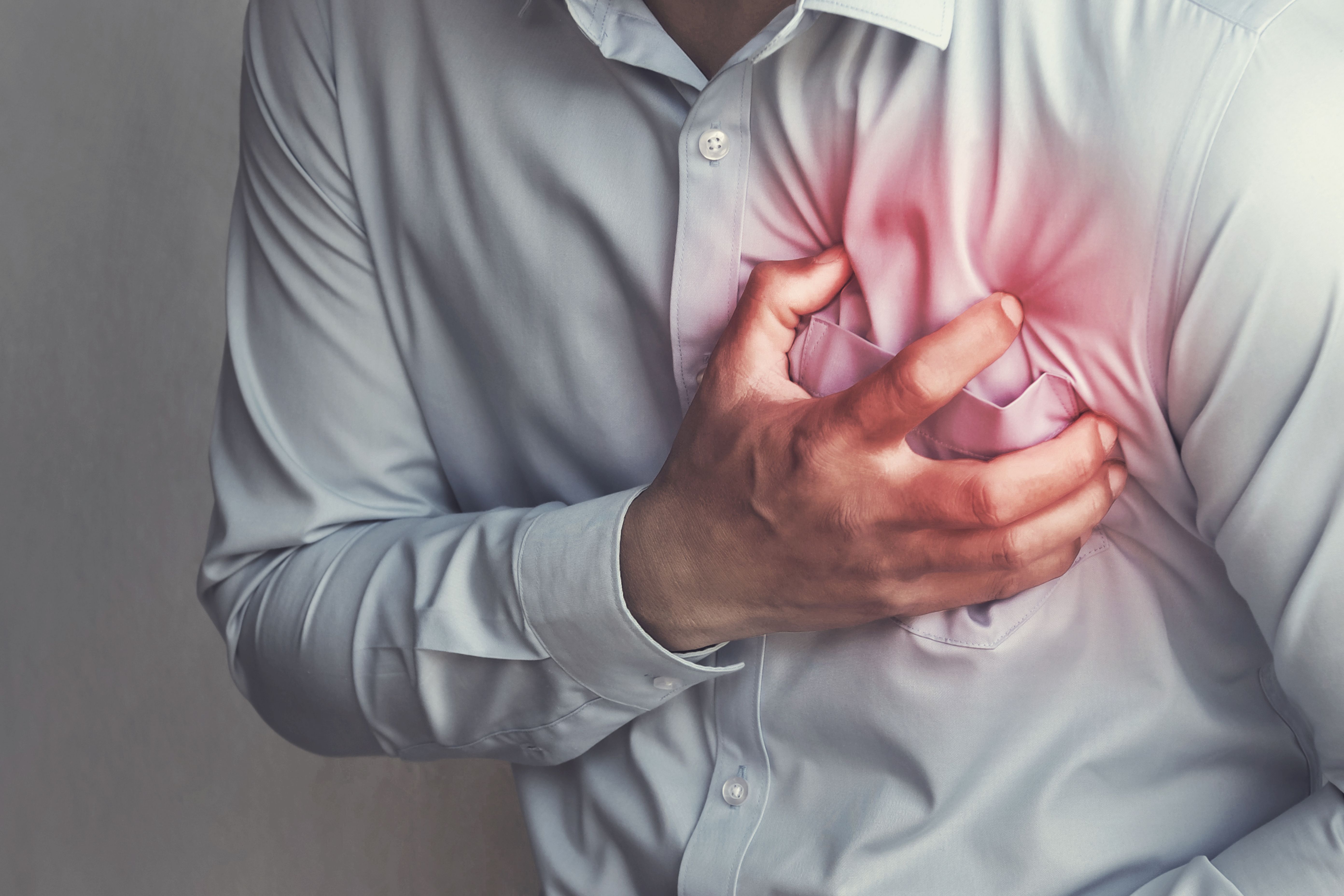- Center on Health Equity and Access
- Clinical
- Health Care Cost
- Health Care Delivery
- Insurance
- Policy
- Technology
- Value-Based Care
Exercise-Induced Hypertension a Risk Factor for Sudden Cardiac Death, Review Finds
The findings show exercise-induced hypertension increases myocardial oxygen demand.
A new review suggests exercise-induced hypertension (EIH) is a risk factor for sudden cardiac death (SCD), but that there are steps physicians and patients can take to lower the risk.
Man holding heart | Image credit: lovelyday12 - stock.adobe.com

The review was published in the Journal of Clinical Medicine.
SCD accounts for approximately one-quarter of all cardiovascular disease (CVD) deaths. While regular exercise can help reduce the risk of CVD, excessive exercise may increase the risk of cardiovascular events, including SCD, wrote co-authors Young-Joo Kim, PhD, of Sungshin Women’s University and Kyoung-Min Park, MD, PhD, of the Sungkyunkwan University School of Medicine, both in South Korea.
While the incidence of SCD among marathon runners has been found to be about 1 in 50,000, most of the runners experiencing SCD were found to be experienced athletes, suggesting their deaths were not merely the result of simple overexertion by out-of-shape runners.
One possible cause, the authors wrote, is a mismatch between oxygen supply and demand, which can lead to myocardial ischemia in patients with CVD. Exercise-induced hypertension (EIH) can also increase myocardial oxygen demand as blood pressure spikes during exertion. EIH is defined as resting systolic blood pressure (SBP) and diastolic blood pressure (DBP) lower than 140/90 mmHg and a maximal SBP of 210 mmHg or higher in men and 190 mmHg or higher in women.
“Chronic endothelial dysfunction, decreased myocardial diastolic function and myocardial hypertrophy, fatal arrhythmia, myocardial ischemia on electrocardiograms, and, crucially, an increased prevalence of coronary artery plaques have been reported [in patients with EIH],” Kim and Park noted. “The results of these studies suggest that EIH in long-distance runners may produce a significant possibility of developing SCD during exercise or competition.”
While there is no direct evidence causally linking EIH and SCD in long-distance runners, EIH increases the incidence of resting hypertension and is an independent risk factor for cardio-cerebrovascular disease. The authors therefore decided to review the existing literature to better understand the ways in which EIH can lead to adverse cardiac events in long-distance, middle-aged runners.
The authors found nearly 2000 studies related to both long-distance runners and EIH and excluded studies that were focused on arterial hypertension, exercise-induced pulmonary hypertension, and those that did not contain exercise stress test data. Those and other criteria left them with 24 studies to analyze.
“Recent studies suggest that an imbalance between oxygen demand and supply due to ventricular hypertrophy may be the actual cause of cardiovascular disease, regardless of CAD [coronary artery disease],” they said. “Exercising excessively over an extended period can reduce endothelial function and increase arterial stiffness, which in turn increases afterload and leads to an excessive increase in blood pressure during exercise.”
Middle-aged long-distance runners were found to have higher rates of EIH than long-distance runners in other age groups, and the rate increased in runners with critical arrhythmias. The authors also noted that EIH is a risk factor for resting hypertension and cardio-cerebrovascular diseases. The studies suggest a number of potential interventions for physicians to prevent and treat EIH in patients who are long-distance runners.
Oxidative stress and low-density lipoprotein (LDL) oxidation induce endothelial dysfunction, and excessive endurance training can increase LDL oxidation. Yet, despite some evidence that antioxidants may have positive effects, there are not yet clear guidelines for antioxidant doses, the authors noted, adding that more research is needed in this area.
EIH has also been linked with angiotensin II activity, according to the authors. For instance, a 2008 study looked at the relationship between angiotensin II and exaggerated blood pressure response to exercise, finding that people with higher angiotensin II during exercise were more likely to have an exaggerated blood pressure response.2 Kim and Park therefore suggested that patients with EIH may benefit from angiotensin II receptor blockers.
They concluded that long-distance runners with EIH should adjust their exercise levels and frequency and limit their participation in long-distance races. In addition, they said middle-aged runners should check their exercise-induced blood pressure at least once per year by doing an exercise stress test and cardiac CT.
References
1. Kim YJ, Park KM. Possible mechanisms for adverse cardiac events caused by exercise-induced hypertension in long-distance middle-aged runners: a review. J Clin Med. Published online April 10, 2024. doi:10.3390/jcm13082184
2. Shim CY, Ha JW, Park S, et al. Exaggerated blood pressure response to exercise is associated with augmented rise of angiotensin II during exercise. J Am Coll Cardiol. 2008;52(4):287-292. doi:10.1016/j.jacc.2008.03.052
Frameworks for Advancing Health Equity: Urban Health Outreach
May 9th 2024In the series debut episode of "Frameworks for Advancing Health Equity," Mary Sligh, CRNP, and Chelsea Chappars, of Allegheny Health Network, explain how the Urban Health Outreach program aims to improve health equity for individuals experiencing homelessness.
Listen
